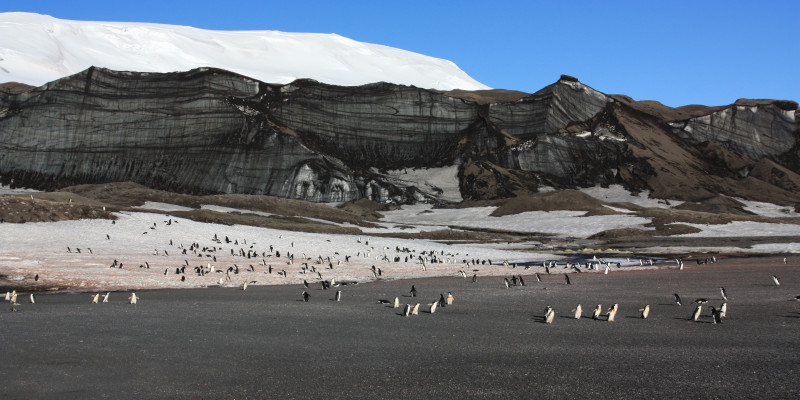Geology of the Antarctic
 Click to enlarge
Click to enlargeSource: Fritz Hertel/UBA
When one considers the mile-thick ice shields which cover the Antarctic continent today, it is hard to imagine that Antarctica used to be fertile land and completely free of ice. Some 170 million years ago Antarctica was still part of the Gondwana supercontinent - until it broke up and Antarctica drifted south and slowly began to freeze over.








